After a Covid pause, soon we will go to Poland again – exciting! 🙂
Music: www.bensound.com

After a Covid pause, soon we will go to Poland again – exciting! 🙂
Music: www.bensound.com
Music: www.Bensound.com
“I thought the program was phenomenal. German culture is full of some of the most friendly and innovative minds that I’ve ever come into contact with. From the heightened level of sophistication seen in the Mercedes Benz factory to the attention to detail in the art of brewing beer- I learned so much about business abroad here and I’m super grateful for all of the experiences I had the pleasure of enjoying while abroad!”
(Kayden Tucker ’22)
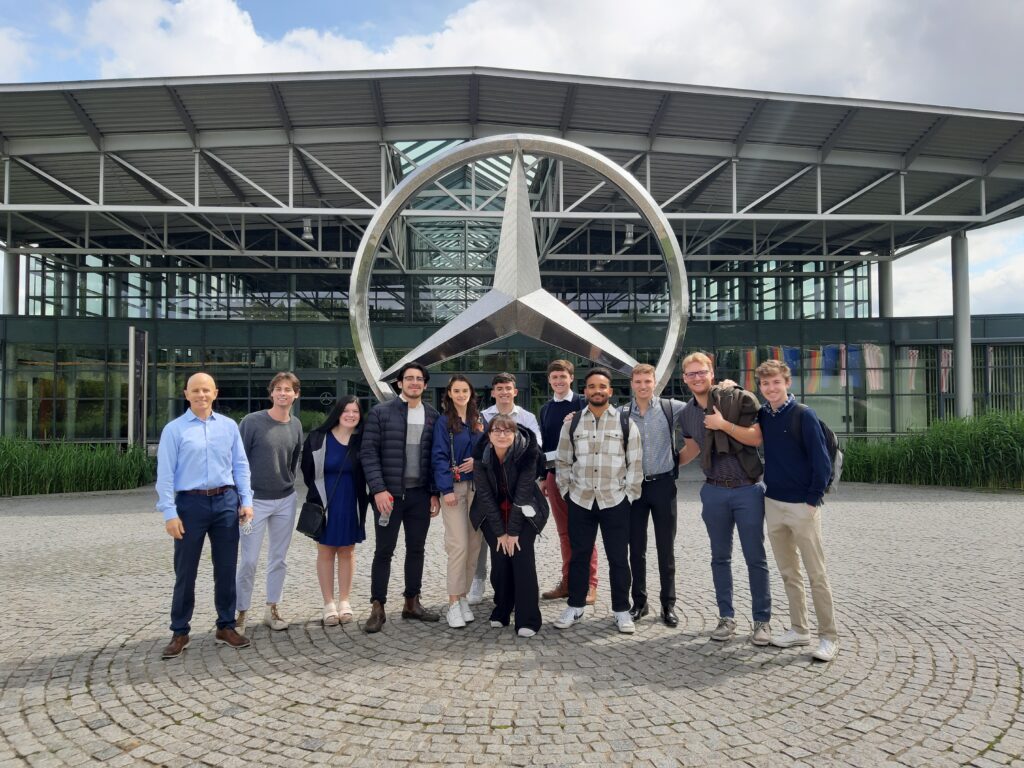
“My time in Bremen, Germany with the GIS program was for sure a time to remember. The Dickinson Program and students currently studying abroad were extremely helpful in preparing us and making a country I have never been to feel like home for two weeks. I was amazed at learning the German culture and learning a bit of the German language on the side. As I had never been to Germany before, I had a wonderful time taking in every experience. Our time visiting local businesses was very eye opening into the global markets and the ways COVID-19 altered business outputs/operations.” (William Giguere ’23)
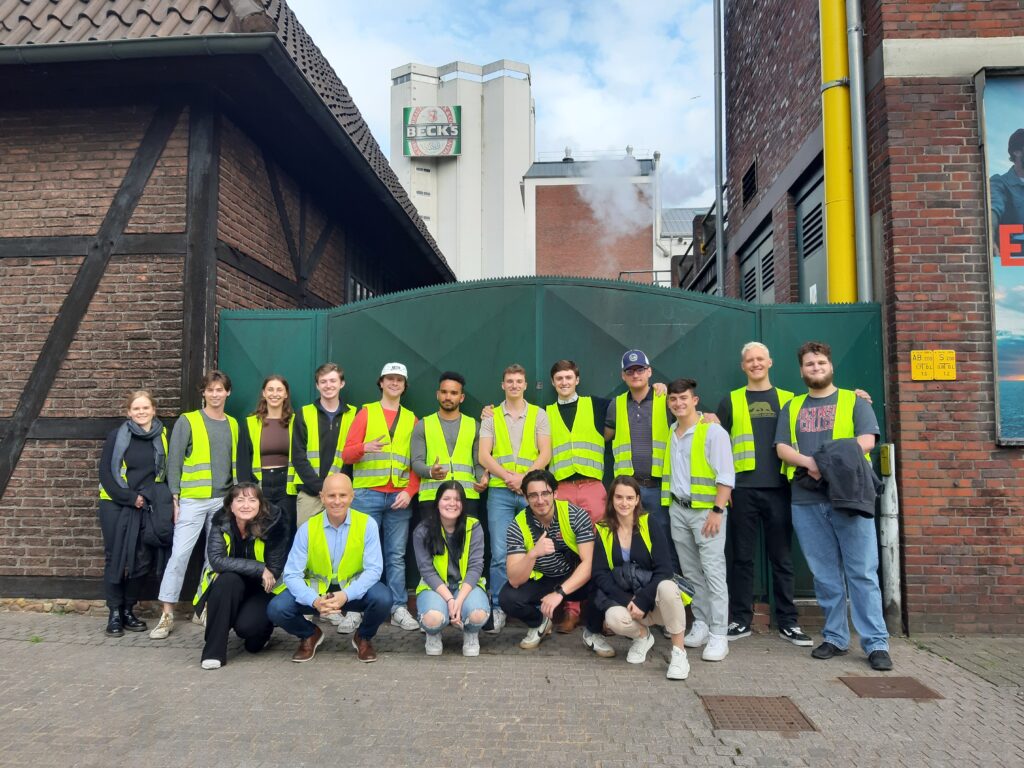
Photo credit: Durden Dickinson Bremen Program
As part of the GISEB (Globally Integrated Semester on Entrepreneurship in Bremen) program, we recently had the pleasure of welcoming some great visitors to Bremen! Check out these wonderful photos, taken by participant Sierra Stevens! Stay tuned for more photo and video content!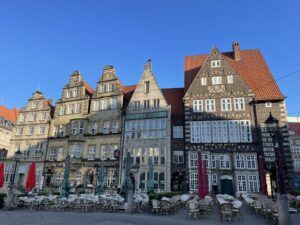
 “I was initially very nervous about traveling to Germany. Not only had I never traveled out of the country, but I also didn’t know any German. Sophie’s expertise (an exchange student from Bremen University) calmed my nerves a bit, but I was still anxious about the trip.
“I was initially very nervous about traveling to Germany. Not only had I never traveled out of the country, but I also didn’t know any German. Sophie’s expertise (an exchange student from Bremen University) calmed my nerves a bit, but I was still anxious about the trip.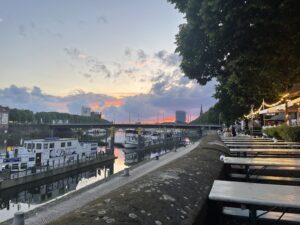
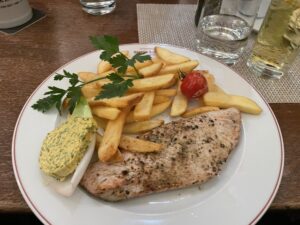 respectful manner.
respectful manner.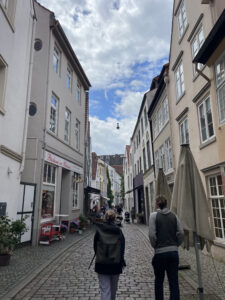
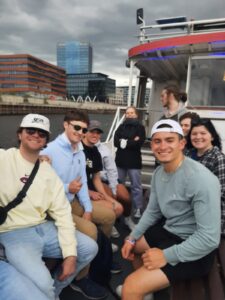
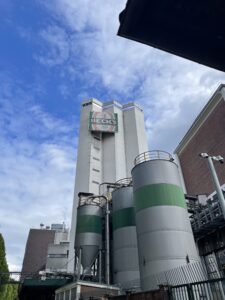
To wrap up our little Vienna unit, we’d like to share this clip with you which sums up our favorite highlights during our lovely Vienna 2022 trip!
Baba Wien, see you next year! 🙂
Music: www.bensound.com
Video credit: Durden Dickinson Bremen Program
by Amanda Sorensen ’23 and Mac Tambussi ’23
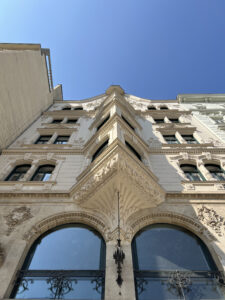
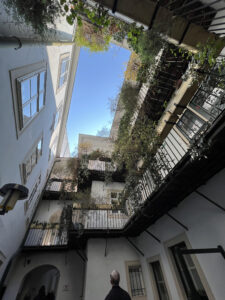
“I really enjoyed the architecture throughout Vienna. The Nationalbibliothek, Stephansdom, and Schönbrunn Palace were absolutely stunning, but what I loved most was wandering through the small streets and stumbling upon beautiful churches and colorful facades of beautifully constructed buildings.” (Amanda Sorensen)
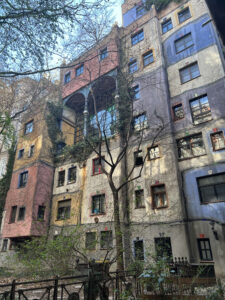
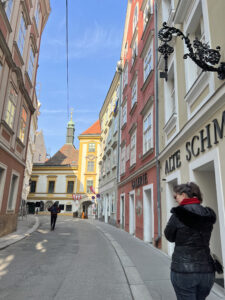
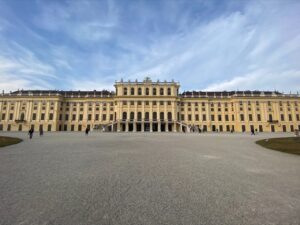 “Vienna was awesome. I have always heard and learned about how beautiful Vienna is, in class, movies, and books, but I they really don’t do it justice. Vienna took my breath away. It had a rich history with the Habsburgs and have a beautiful skyline and architecture. I really enjoyed trying traditional Wiener Schnitzel. What I enjoyed most of all, which came as a shocker to me, was the opera. The show was called
“Vienna was awesome. I have always heard and learned about how beautiful Vienna is, in class, movies, and books, but I they really don’t do it justice. Vienna took my breath away. It had a rich history with the Habsburgs and have a beautiful skyline and architecture. I really enjoyed trying traditional Wiener Schnitzel. What I enjoyed most of all, which came as a shocker to me, was the opera. The show was called “Die Entführung aus dem Serail.” Despite our not-so-great seats, I thought the opera was electric. Vienna really was an awesome excursion!” (Mac Tambussi)
“Die Entführung aus dem Serail.” Despite our not-so-great seats, I thought the opera was electric. Vienna really was an awesome excursion!” (Mac Tambussi)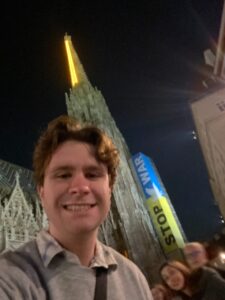
Photo credit: Durden Dickinson Bremen Program
by Kathryn Baker ’23 and Nicholas Rickert ’23
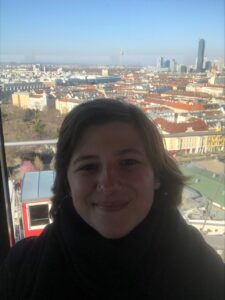 “My favorite part of our Wien excursion was exploring Prater Park! It is a large amusement park that is open 24 hours. One of the most famous landmarks in Wien is the Wiener Riesenrad (ferris wheel). We rode the Riesenrad and saw some of the most beautiful views of the city. After riding the Riesenrad, some of us walked around the park and got some food. I ate another Schokoapfel (apple covered in chocolate) and ice cream. I was surprised at how many ‘scary, haunted’ rides there were at Prater, there were at least five! Overall this is one of my favorite memories.” (Kathryn Baker)
“My favorite part of our Wien excursion was exploring Prater Park! It is a large amusement park that is open 24 hours. One of the most famous landmarks in Wien is the Wiener Riesenrad (ferris wheel). We rode the Riesenrad and saw some of the most beautiful views of the city. After riding the Riesenrad, some of us walked around the park and got some food. I ate another Schokoapfel (apple covered in chocolate) and ice cream. I was surprised at how many ‘scary, haunted’ rides there were at Prater, there were at least five! Overall this is one of my favorite memories.” (Kathryn Baker)

 “Trying regional dishes and the enjoying unique local atmospheres in restaurants always leave me with positive and lasting impressions of a foreign city, and Vienna was no exception. Our group had the pleasure of being taken to dine in excellent traditional restaurants as well as Vienna’s famous ‘Cafe Demel,’ where I fell in love with a sweet dish called ‘Kaiserschmarrn’ which is like a pancake but much more delectable. Other highlights for me were the Viennese potato salad, Goulash, and of course Wiener Schnitzel. Combined with the lovely decor and a fine selection of beer, I don’t think I’ll be able to forget the restaurants!” (Nick Rickert)
“Trying regional dishes and the enjoying unique local atmospheres in restaurants always leave me with positive and lasting impressions of a foreign city, and Vienna was no exception. Our group had the pleasure of being taken to dine in excellent traditional restaurants as well as Vienna’s famous ‘Cafe Demel,’ where I fell in love with a sweet dish called ‘Kaiserschmarrn’ which is like a pancake but much more delectable. Other highlights for me were the Viennese potato salad, Goulash, and of course Wiener Schnitzel. Combined with the lovely decor and a fine selection of beer, I don’t think I’ll be able to forget the restaurants!” (Nick Rickert)
Photo credit: Durden Dickinson Bremen Program
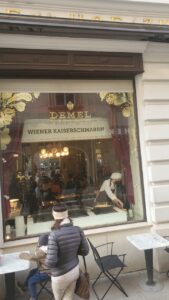
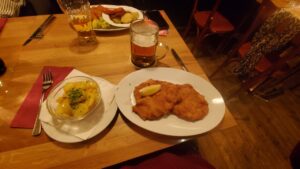
by Shannon Vogel ’23, Andrew Irvine ’23 and Evan Bates ’23
“The National Library was my favorite place we visited. The architecture and the amount of books felt straight out of a movie, and fit my dream image of the perfect library (complete with bookcase doors!) It was also interesting to learn that it was one of the first German language public libraries.” (Shannon)
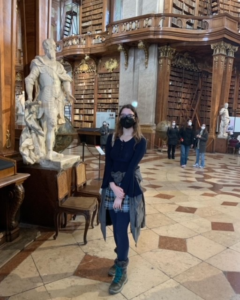
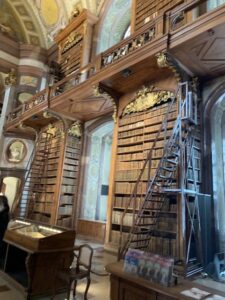
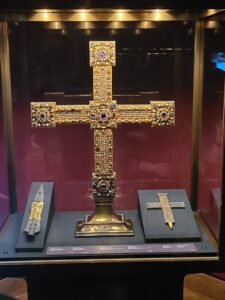 “On the first day of the excursion in Vienna, the group visited the Schatzkammer (Treasure Chamber) of Austria. Within the chamber lay centuries’ worth of priceless artifacts from various points of Austrian history. Some of the items included were coronation robes, tapestries, ceremonial swords with their sheaths, reliquaries of various saints and of religious items, and of course the crowns of various Holy Roman Emperors. Unfortunately, the Imperial Crown, believed to have been made for Otto I. (the Great) around 960 and later painted into a picture of the earlier Charlemagne (Karl der Große) who was crowned in 800, was off display for research purposes. Regardless, the treasures of Austria were an astounding journey through a millennium of history.” (Andrew)
“On the first day of the excursion in Vienna, the group visited the Schatzkammer (Treasure Chamber) of Austria. Within the chamber lay centuries’ worth of priceless artifacts from various points of Austrian history. Some of the items included were coronation robes, tapestries, ceremonial swords with their sheaths, reliquaries of various saints and of religious items, and of course the crowns of various Holy Roman Emperors. Unfortunately, the Imperial Crown, believed to have been made for Otto I. (the Great) around 960 and later painted into a picture of the earlier Charlemagne (Karl der Große) who was crowned in 800, was off display for research purposes. Regardless, the treasures of Austria were an astounding journey through a millennium of history.” (Andrew)
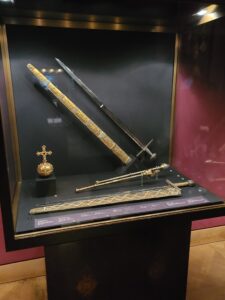
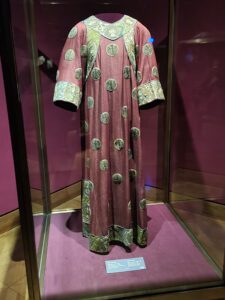
“One of my favorite attractions in Vienna might have been the Kaisergruft (the imperial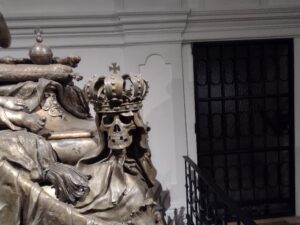 crypt of the Habsburg family). It was certainly odd to walk amongst the sarcophagi of ancient rulers but the sheer opulence and uniqueness of each coffin struck me. I think of all the decorations on the coffins, the skulls and figures were my favorite. They were wonderfully macabre, sometimes with wings or the cast crowns of their long since fallen domains. I was also quite interested in the fact that the family separated
crypt of the Habsburg family). It was certainly odd to walk amongst the sarcophagi of ancient rulers but the sheer opulence and uniqueness of each coffin struck me. I think of all the decorations on the coffins, the skulls and figures were my favorite. They were wonderfully macabre, sometimes with wings or the cast crowns of their long since fallen domains. I was also quite interested in the fact that the family separated 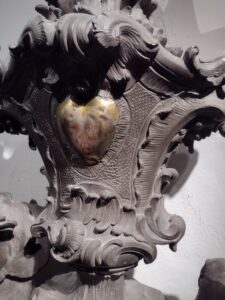 their organs to send to their family or original kingdom like the heart container in the picture here. The biggest coffin was for 2 rulers and was so large it had it’s own room and had to be lowered from the street above and the roof built above it. There are even modern burials here with one even from 2011 I believe. Certainly a lovely visit for those who love skulls and grim things. I heartily recommend.” (Evan)
their organs to send to their family or original kingdom like the heart container in the picture here. The biggest coffin was for 2 rulers and was so large it had it’s own room and had to be lowered from the street above and the roof built above it. There are even modern burials here with one even from 2011 I believe. Certainly a lovely visit for those who love skulls and grim things. I heartily recommend.” (Evan)
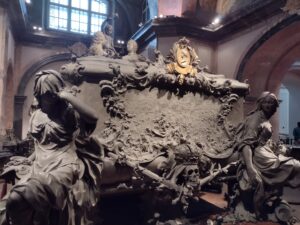
All pictures taken and provided by students or Dickinson staff.
by Dr. Janine Ludwig
At some point, the pandemic will be over, and we will be able to travel again. When that will be possible, we are looking forward to offering rich academic excursions for our students again, one of them our annual excursion to Berlin. Please see here what students can expect to see and learn in Germany’s capital:
Our Berlin excursion is usually centered around the once divided Germany, German and GDR history, culture, literature, and the process of reunification. We meet with politicians such as the last Premier, t.i. Chairman of the Council of Ministers, of the German Democratic Republic (DDR), Hans Modrow, and others. We visit the former headquarters of the Ministry of State Security (MfS, often called Stasi), including Erich Mielke’s office which is still intact. In the archives and basement, we look through authentic Stasi files and visit the former Stasi prison Hohenschönhausen. Of course, we also delve into current German politics, meeting the assistant of the governmental Coordinator for Transatlantic Relations in the State Department and attending parliamentary sessions.
by Dr. Janine Ludwig
Right now, things are looking much brighter with regard to the pandemic, and we are hopeful that we will be able to travel again at some point. We are looking forward to offering rich academic excursions for our students again, one of them to Vienna. The broader theme of this annual trip is German-Austrian history and culture from the Middle Ages until today.
In introductory lectures, we follow the Holy Roman Empire of the German Nation, from Charles the Great (800) to the Napoleonic conquests (1806). We track the Habsburg dynasty (1273-1918) and the Austro-Hungarian k.u.k Monarchy, later: Austrian Empire (1804-1918), overlapping with the German Empire (1871-1918). With this information, the students can better understand our tours and exhibits and grasp the importance of Vienna as a former political and cultural center of Europe. Additionally, we indulge in the imperial glamour and culinary abundance of this beautiful city.
In recent years, we have visited Mozart’s house, the Sigmund Freud Museum, castles, and the United Nations Office Vienna. We saw productions in the world-famous Viennese Burgtheater, the Volkstheater or the opera and indulged in traditional delicacies as well as in the famous coffee house culture.
Student’s comments:
“In Vienna, we learned a lot about the history of Austria and by extension Germany. My favorite part of the trip was learning about the Hapsburg dynasty, and visiting the castle in which they lived. I also enjoyed visiting Vienna’s many churches. One of my other favorite parts of the trip was the day in Bratislava. I knew basically nothing about Bratislava and Slovakia, and I enjoyed learning about the city and its history.” >James Moore ’20<
“What attracted me the most about Vienna was the vibe of the city. As a cultural center in Europe, Vienna has retained its historical memory and blended it with the bustle of modern society.” >Zhen Luo ‘18<
“Vienna has quickly become one of my favorite places in the world […] and within this gorgeous palace is the National Library. […] The best part of the tour for me was being able to see some selected books like a Gutenberg Bible up close and even touch it. My nerdy book-loving soul was close to exploding. The trip to the library was an absolute highlight of our trip for me.” >Meghan Straub ‘18<